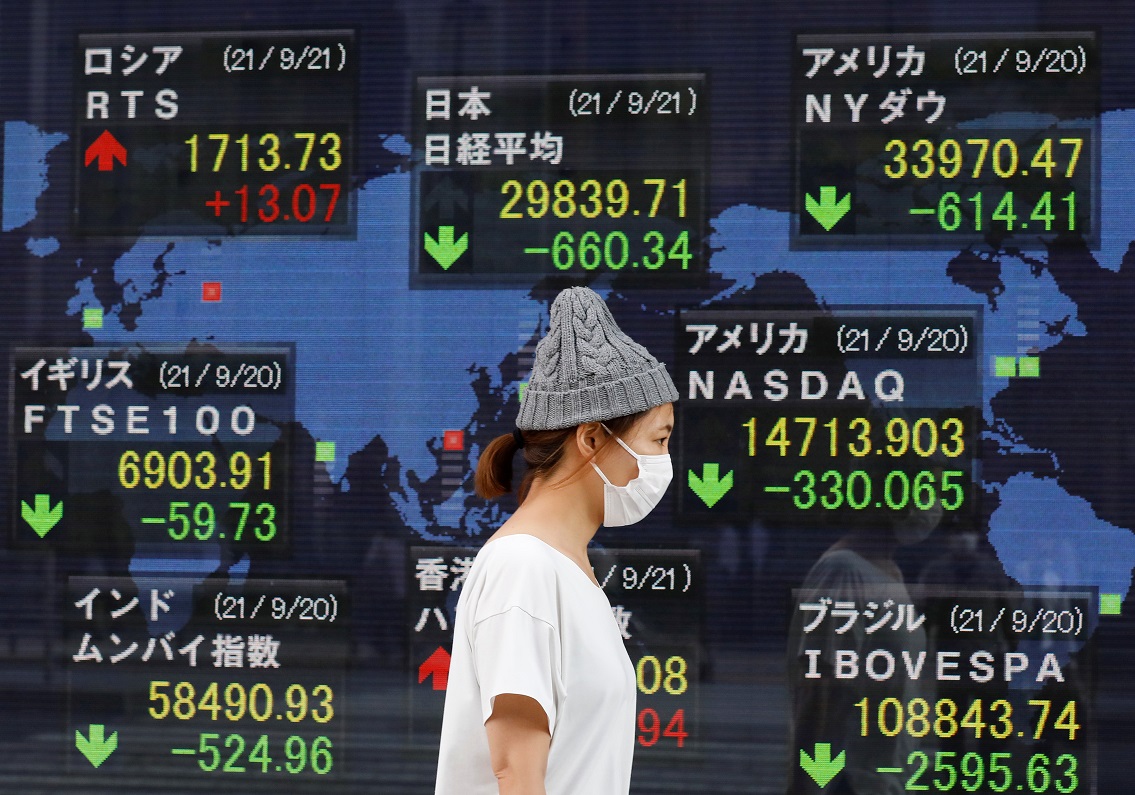ASIAN shares slipped today as warnings that Russia could invade Ukraine at any time sent oil prices to seven-year peaks, boosting bonds and belting the euro.
The US yesterday said Russia might create a surprise pretext for an attack, as it reaffirmed a pledge to defend “every inch” of the North-Atlantic Treaty Organization (NATO) territory.
The cautious mood saw MSCI’s broadest index of Asia-Pacific shares outside Japan drop 0.2%, while Japan’s Nikkei lost 2.1%.
S&P 500 futures edged up 0.2% and Nasdaq futures 0.1% after steep losses on Friday.
Markets have been in convulsions since an alarmingly high US inflation reading sparked speculation the Federal Reserve might raise rates by a full 50 basis points in March.
There was even chatter about an emergency inter-meeting hike. That was spurred in part by the timing of a closed Fed Board meeting today, though the event seemed routine.
The talk was tamped down when the Federal Reserve (Fed) released an unchanged bond buying schedule for the coming month, since the central bank has said it would only hike after its buying had ceased.
San Francisco Fed president Mary Daly also played down the need for a half-point move in an interview yesterday, saying being too “abrupt and aggressive” on policy could be counter-productive.
Futures markets since have scaled back the risk of a half-point rise to around 40%, when it had been priced as a near certainty at one stage last week.
“Broad-based inflation pressures have given rise to earlier-than-expected pressure for a synchronised shift toward restrictive policy across the globe,” said JPMorgan chief economist Bruce Kasman.
“But we do not expect it to translate into aggressive action in March,” he added. “In part, this reflects uncertainties related to Omicron, geopolitical tensions, and the purchasing power squeeze from high inflation—all of which weigh heavily on current-quarter growth.”
Attention will now be on an appearance by St. Louis Fed president James Bullard later today, given he recently called for 100 basis points of tightening by June.
Oil, gold prices up
All the rate chatter sent Treasury yields to peaks last seen in 2019, before geopolitical tensions prompted a safe-haven rally late on Friday. Yields on 10-year notes were last at 1.96%, having been as high as 2.06% last week.
The yield curve also flattened markedly and almost inverted between five and 10-year maturities, as investors wagered the coming Fed tightening would slow economic growth.
The risk of war in Ukraine has seen the euro retreat to US$1.13, from last week’s top of US$1.14. The safe-haven yen regained some ground to leave the dollar at 115.50 yen, from a peak of 116.33.
The Bank of Japan will conduct an unlimited bond buying offer today to restrain yields there.
The drop in the euro lifted the dollar index up to 96.035 and away from last week’s trough of 95.172. The dollar was also up at 77.26 roubles, after jumping 2.9% on Friday.
Gold was holding gains at US$1,859 an ounce, after climbing 1.6% on Friday.
Oil prices were up near seven-year highs amid concerns about supply given the tensions in Europe and as demand recovers from the coronavirus pandemic.
Brent added another 93 cents to US$95.37 a barrel, while US crude rose US$1.23 to US$94.33. – Feb 14, 2022









